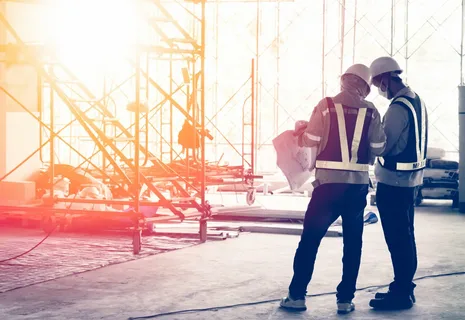The design of modern detention facilities goes far beyond bars and locked doors. Today’s detention equipment contractors face the challenge of balancing strict security with humane living conditions. They carefully plan every detail, from the structure of cells to the choice of materials, ensuring facilities remain secure while treating inmates with dignity.
Thoughtfully Designed Cells Promote Safety While Respecting Inmate Well-being
Cells serve as both living spaces and security enclosures, making their design one of the most critical aspects of a detention facility. Detention equipment contractors focus on layouts that minimize conflict and create a structured yet livable environment. Cells must prevent self-harm and unauthorized movement while allowing for natural movement and daily routines. Features like rounded edges, tamper-resistant fixtures, and adequate space contribute to both security and overall inmate well-being.
Beyond physical structure, ventilation and temperature control play a significant role in maintaining humane conditions. Overcrowding and poor airflow can lead to discomfort and agitation, increasing the likelihood of disturbances. Security detention equipment contractors integrate advanced HVAC systems to regulate airflow, preventing extreme temperatures and ensuring healthier air quality. These seemingly small details contribute to an environment where safety and dignity coexist.
Natural Lighting Integration Balances Security and Psychological Comfort
Lack of natural light has been linked to increased stress and anxiety, yet traditional detention facilities often relied on harsh artificial lighting. Today, detention equipment contractors incorporate controlled natural light sources that enhance psychological well-being without compromising security. Skylights, high-positioned windows, and shatter-resistant glass panels allow natural light to filter into cells and common areas while maintaining structural integrity.
Security detention equipment contractors also utilize LED lighting that mimics daylight cycles, helping to regulate inmates’ circadian rhythms. Exposure to natural light supports better sleep patterns and reduces behavioral issues linked to stress. By considering both security requirements and psychological health, modern detention facilities create a more stable and manageable environment for both staff and inmates.
Sound-Absorbing Materials Reduce Stress Without Sacrificing Surveillance
Noise control is often overlooked in detention facility design, yet excessive sound can lead to heightened aggression and mental strain. Hard surfaces in traditional facilities amplify noise, making even minor disturbances feel overwhelming. Detention equipment contractors now use sound-absorbing materials to minimize disruptive echoes and reduce overall stress levels.
Acoustic wall panels, rubberized flooring, and insulated ceiling tiles help create a calmer atmosphere while still allowing clear communication between staff and inmates. Security detention equipment contractors carefully balance soundproofing with surveillance needs, ensuring critical sounds—such as emergency calls or potential conflicts—remain audible. This balance fosters a more manageable facility where both security and mental well-being are prioritized.
Secure but Comfortable Furniture That Encourages Peaceful Interactions
Furniture in detention facilities must be both secure and functional, designed to prevent misuse while providing necessary comfort. Detention equipment contractors develop tamper-resistant seating, tables, and beds that discourage vandalism but still offer ergonomic support. Molded furniture made from high-durability materials withstands heavy use and reduces the risk of being dismantled for unintended purposes.
Security detention equipment contractors also design communal areas with seating arrangements that encourage positive interactions. Instead of rigid, bolted-down benches, facilities now feature thoughtfully placed seating that allows for structured movement while minimizing isolation. These design choices contribute to a sense of order and reduce tension among inmates, fostering a more controlled and cooperative environment.
Open Yet Controlled Spaces That Foster Calmness and Cooperation
Completely enclosed, confined spaces can contribute to feelings of anxiety and hostility, making open yet secure layouts essential in modern detention facilities. Detention equipment contractors design facilities with strategic openness, allowing supervised movement while maintaining strict security measures. Dayrooms, exercise yards, and visitation areas are constructed to prevent overcrowding while giving inmates space to engage in healthy activities.
Security detention equipment contractors utilize reinforced partitions, transparent security barriers, and monitored pathways to provide a sense of openness without increasing risk. This approach encourages a structured environment where inmates are less likely to feel trapped or claustrophobic, ultimately leading to better behavior and cooperation. By prioritizing well-designed, open spaces, facilities create a balance between safety and humane treatment.
Durable Finishes That Maintain Dignity and Prevent Harsh Confinement Feelings
The materials used in detention facilities play a significant role in shaping the overall atmosphere. Cold, industrial finishes can contribute to feelings of isolation, while softer, more durable finishes create a sense of normalcy without sacrificing security. Detention equipment contractors carefully select coatings, flooring, and wall materials that are both resilient and visually calming.
Security detention equipment contractors use high-impact resistant coatings that prevent damage while offering a smoother, less abrasive surface. Non-reflective finishes help minimize glare, reducing eye strain and discomfort for both staff and inmates. By focusing on durable yet humane finishes, modern detention facilities maintain order while ensuring those inside experience a dignified environment.

